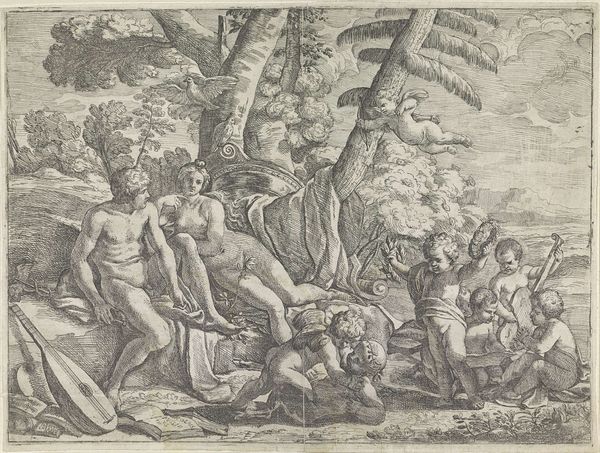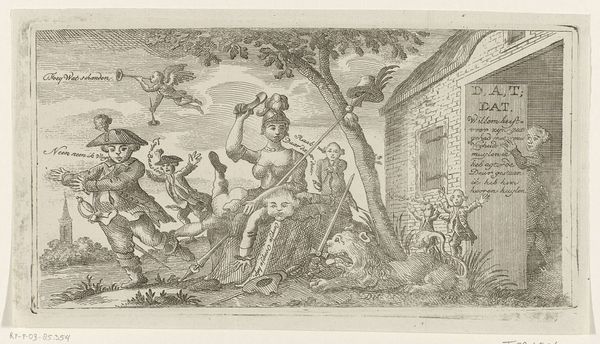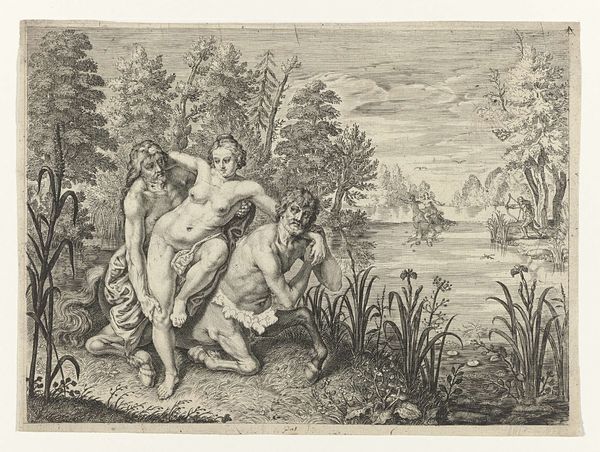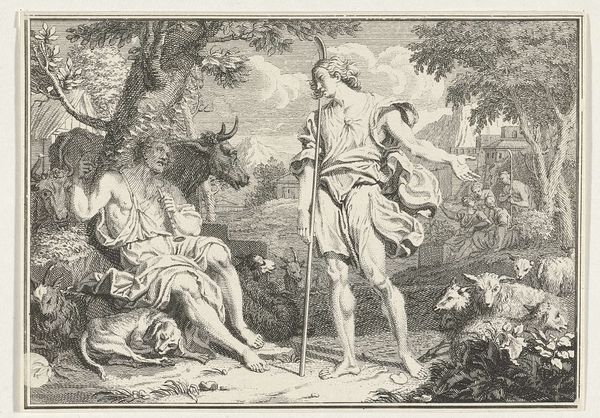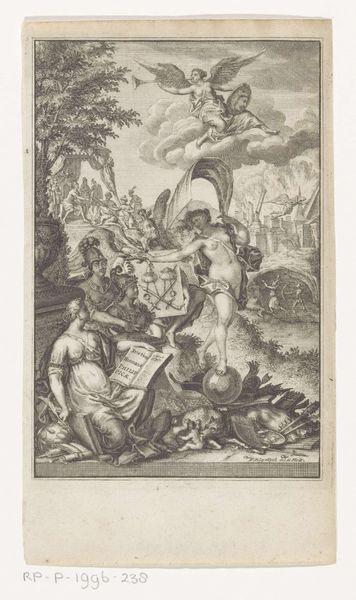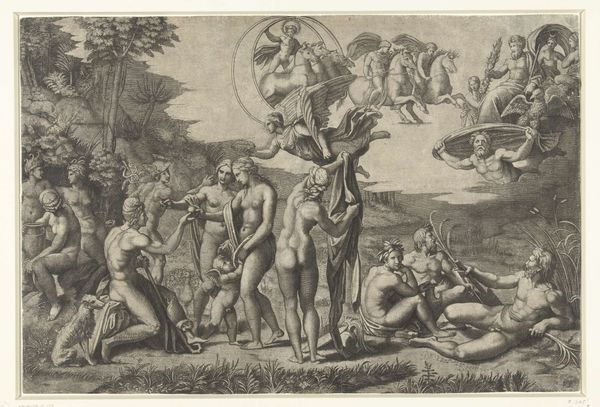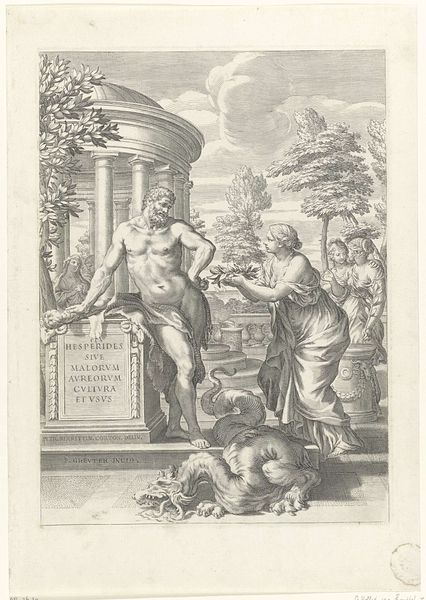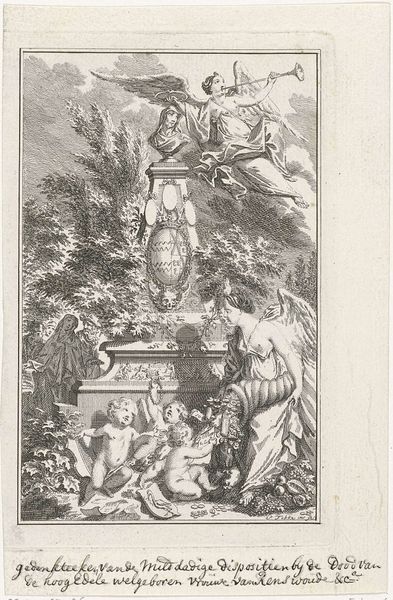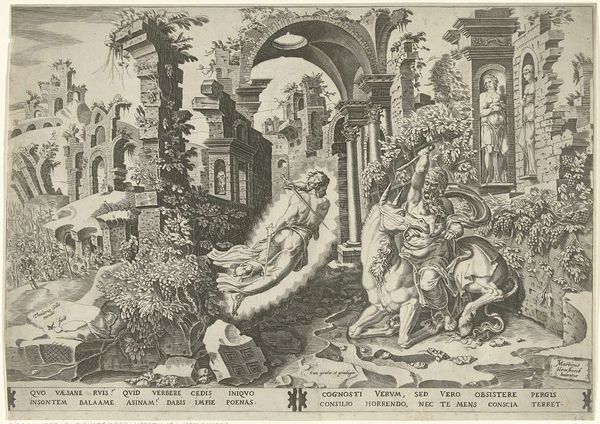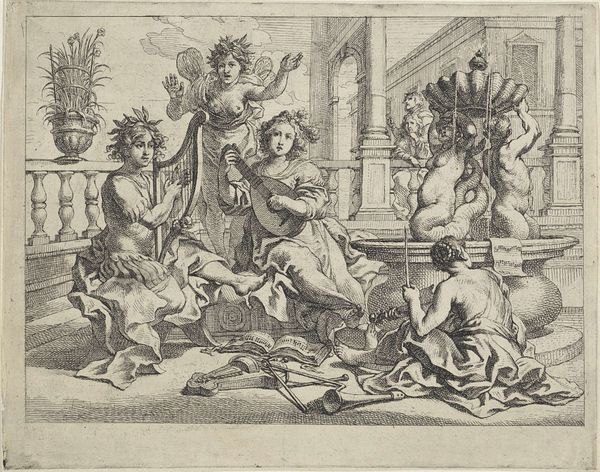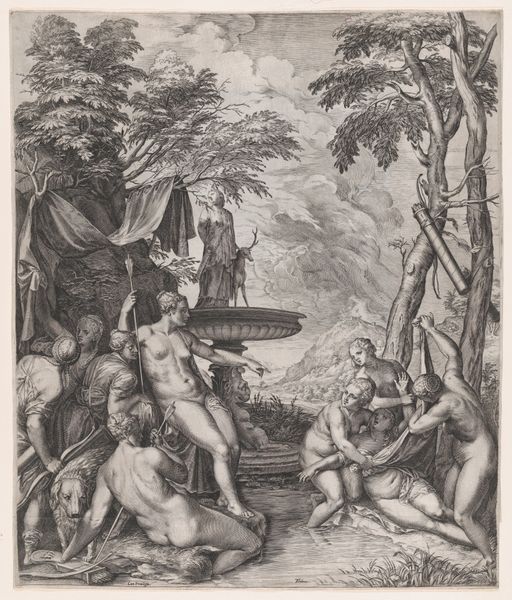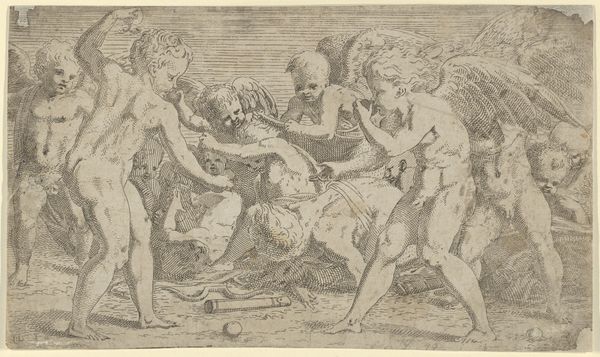
engraving
#
allegory
#
baroque
#
landscape
#
caricature
#
figuration
#
pen-ink sketch
#
surrealism
#
history-painting
#
nude
#
engraving
Dimensions: height 198 mm, width 242 mm
Copyright: Rijks Museum: Open Domain
Curator: Let's turn our attention to this intriguing engraving, "Bathsheba Receiving David's Message," attributed to Jan van Somer, created sometime between 1655 and 1700. Editor: Well, my initial impression is one of staged artifice. The light seems overly distributed, flattening forms, and the figure of Bathsheba has this unsettling, idealized quality amidst otherwise baroque characteristics. Curator: Absolutely. Consider the context: historical paintings of biblical scenes were a powerful tool for moral instruction. This work, referencing the story of King David's adultery, wasn’t simply about religious devotion; it carried weight in discussions around power, gender, and social hierarchies. The prominent display of Bathsheba is meant to create a spectacle around female purity in a context of potential compromise. Editor: Indeed. Though I wonder about the figure's composition. Note the way she dominates the frame but also contrasts with the servant, drawing a strong division—a powerful visual cue between the idealized female body and darker skin servant bringing the adulterous message. Curator: Precisely. The artist draws on and perpetuates cultural stereotypes. In the social hierarchy of the time, individuals of African descent were frequently depicted in subservient roles. So this specific artistic rendering underscores prevailing attitudes about race and social standing during the 17th century. Editor: The landscape elements add another layer. That classically inspired architecture visible through the foliage juxtaposed with the ornate fountain hints at the tension between established order and the intrusion of earthly desires and immoral inclinations, no? Curator: Yes, the architectural features point to David's world of regal authority encroaching on the pastoral scene with the figure of Bathsheba sitting with sandals near a spring, a powerful cultural trope related to female purity. This illustrates the artist's strategic attempt to critique royal power, though always carefully managed for acceptable public consumption. Editor: Looking closer, I see that tension reflected in the quality of line. There's precision in the architectural details but a looseness in the foliage that enhances the underlying surreal, dramatic mood of the piece. It’s this technical dichotomy, a clear baroque attribute, that renders the theme with striking visual power. Curator: Right, these sorts of art pieces are reminders of how images played a vital role in constructing and maintaining societal norms of that period. It forces us to examine not only the historical narrative but also how this was packaged to create an understanding about power relations during its period. Editor: It shows the effectiveness with which compositions of lines, values, forms and shapes render emotions while upholding cultural meaning. Curator: Exactly. A crucial look into a time very different from our own, reflected and amplified through the careful crafting of art.
Comments
No comments
Be the first to comment and join the conversation on the ultimate creative platform.
